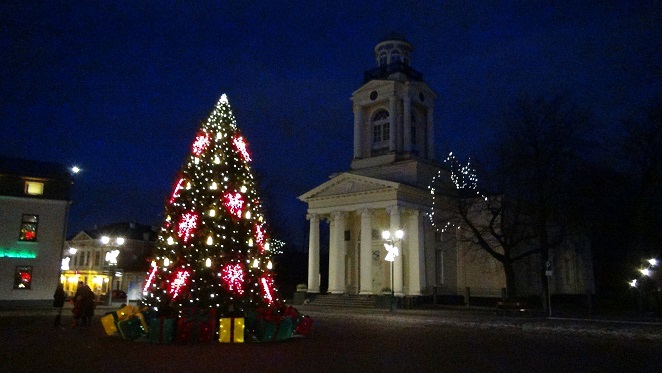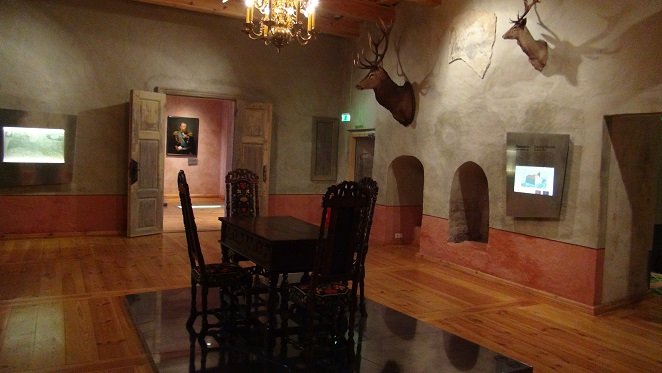Ventspils (pop. 39 000) is a massive port and the commercial hub of northwestern Latvia (Courland).
The docks are seamlessly integrated into city downtown, ships mooring right next to the historic buildings, never allowing one to forget that this is one of the Baltic Sea’s largest ports.

Such status is impressive, given the city’s small population. Still, in the gone-by eras the influence of Ventspils was even greater, as it was the naval heart of Courland-Semigallia duchy that partook in the colonization of Americas and Africa.

Ruled by a single mayor Aivars Lembergs since 1988 Ventspils has been keen on establishing itself as a “pretty city” worth travelling for.
It boasts some of the Baltic States’s nicest landscaping: “flower sculptures” (in summer), decorated cow statues. Even prosaic buildings (such as port warehouses) are well illuminated, arguably surpassing even Riga in that sense.

The most unique Ventspils publicity stunt is the Vent currency. It is possible to “earn” it virtually by doing various online activities (such as answering quiz questions about Ventspils). The banknotes may then be withdrawn from account once in Ventspils, and may be used to pay (in part) various local expenses such as museum tickets.

Much of Ventspils attractions are located in Seaside Ventspils. Built up in 19th century with elaborate wooden villas and homes, the area has been successfully repurposed for modern seaside tourism.

The wide sandy beach is far from the only attraction of Ventspils and the city is regularly constructing new ones. Among them is the artificial hill for skiing (creating one was a big task in lowland Latvia). It is located in the Soviet districts which, together with suburbs, also have interesting historic sights, such as a massive Soviet radar.


One thought on “Ventspils”